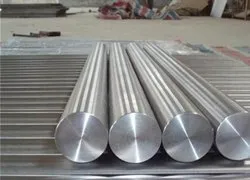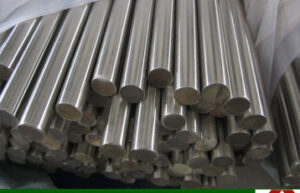Introduction
In the world of metals, the ability to transform raw material into intricate shapes is a testament to a material’s formability. Among the ranks of stainless steel, 410 stainless steel stands as a resilient player with a unique set of attributes. Yet, the art of shaping 410 stainless steel demands an understanding of the factors that influence its formability. In this comprehensive exploration, we delve into the intricate dance of composition, microstructure, temperature, mechanical properties, and processing techniques that collectively mold the formability of 410 stainless steel, transforming it into a canvas for engineering creativity.
The Art of Transformation: Understanding Formability in Metals
 Formability is the art of shaping metals without fracturing or excessive distortion. In the realm of stainless steel, the formability of 410 stainless steel rests on an intricate interplay of factors that must be harmonized for successful shaping.
Formability is the art of shaping metals without fracturing or excessive distortion. In the realm of stainless steel, the formability of 410 stainless steel rests on an intricate interplay of factors that must be harmonized for successful shaping.
Deconstructing the Composition of 410 Stainless Steel
Composition serves as the foundation for formability. The presence of carbon and chromium shapes 410 stainless steel’s properties, impacting its response to deformation processes.
Microstructure Matters: The Role of Crystallography
Microstructure, governed by crystallography, dictates 410 stainless steel’s behavior during forming. The martensitic structure influences mechanical properties and susceptibility to deformation.
Temperature’s Influence: From Annealing to Cold Working
Temperature plays a pivotal role in formability. Annealing and cold working manipulate the material’s microstructure and mechanical properties, enabling controlled shaping.
Mechanical Properties and Formability: A Balancing Act
Mechanical properties—tensile strength, yield strength, and ductility—shape formability. Achieving a balance between these properties is crucial for successful shaping without fracture.
Processing Techniques: Unleashing Formability Potential
Processing techniques, from rolling to extrusion, leverage 410 stainless steel’s malleability. Controlled deformation refines microstructure and enhances formability.
The Science of Stretching: Deep Drawing and its Challenges
Deep drawing, a complex forming process, presents challenges in shaping 410 stainless steel due to its susceptibility to cracking. Proper material selection, lubrication, and process optimization are paramount.
Bending Without Breaking: Forming 410 Stainless Steel
Bending, a fundamental shaping technique, requires an understanding of 410 stainless steel’s mechanical properties and its response to plastic deformation.
Enhancing Formability: Annealing and Stress Relief
 Annealing and stress relief treatments play a pivotal role in enhancing formability. These processes refine microstructure, reduce internal stresses, and improve ductility.
Annealing and stress relief treatments play a pivotal role in enhancing formability. These processes refine microstructure, reduce internal stresses, and improve ductility.
Comparative Analysis: Formability of 410 Stainless Steel vs. Other Grades
Comparing the formability of 410 stainless steel with other grades reveals its unique attributes:
- Austenitic Stainless Steels (e.g., 304): Offer superior formability due to their crystallographic structure and lower hardness.
- Ferritic Stainless Steels: Varying composition impacts formability, with some grades exhibiting better malleability.
Engineering Excellence: Leveraging Formability for Innovative Solutions
Engineers and designers must consider formability’s intricacies when crafting solutions with 410 stainless steel:
- Design Considerations: Design parts that accommodate 410 stainless steel’s formability limits.
- Material Selection: Choose the right grade for the desired forming process and final shape.
- Process Optimization: Fine-tune processing parameters to achieve optimal formability.
FAQs About Formability of 410 Stainless Steel
Q1: Can 410 stainless steel be cold worked for enhanced formability?
While cold working can improve formability to some extent, 410 stainless steel’s martensitic structure can limit its ductility and present challenges during cold forming.
Q2: Is 410 stainless steel suitable for complex forming processes like stamping?
Complex forming processes like stamping can be challenging with 410 stainless steel due to its susceptibility to cracking. Proper lubrication, tool design, and process optimization are crucial.
Q3: How does formability affect the final properties of parts made from 410 stainless steel?
Formability influences the final geometry, mechanical properties, and structural integrity of parts made from 410 stainless steel. Proper forming techniques can lead to desired outcomes.
Conclusion
The world of formability is a dance of composition, microstructure, temperature, and mechanical properties—a symphony that shapes metals into intricate forms. In the realm of stainless steel, 410 stainless steel emerges as a unique canvas, demanding an understanding of its nuances for successful shaping. As engineers and designers embark on the journey of turning raw material into functional parts, they must embrace the science of formability, mastering the art of manipulating 410 stainless steel to create innovative solutions that harmonize strength, shape, and functionality.
